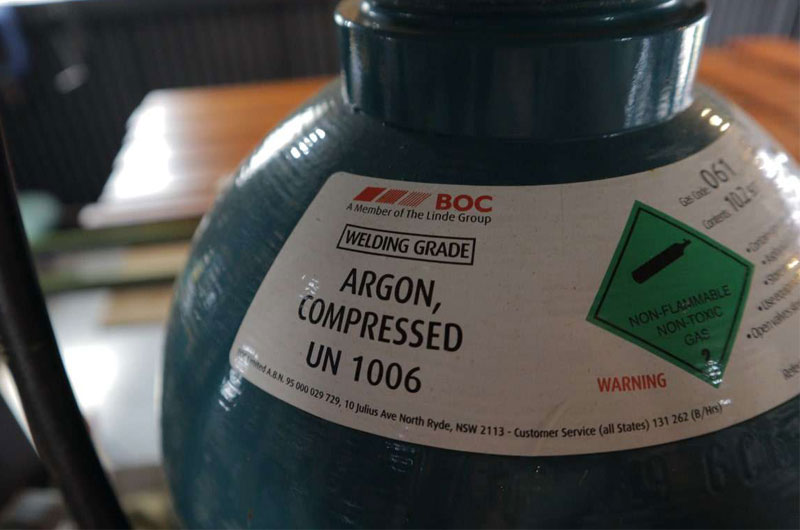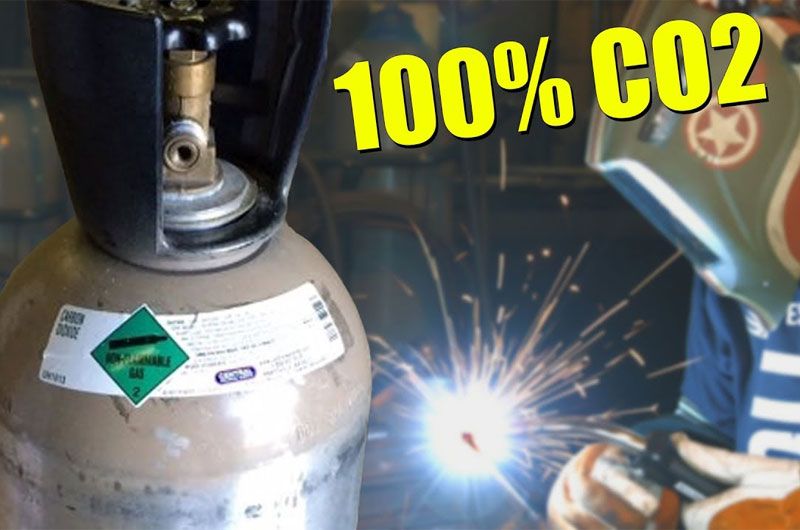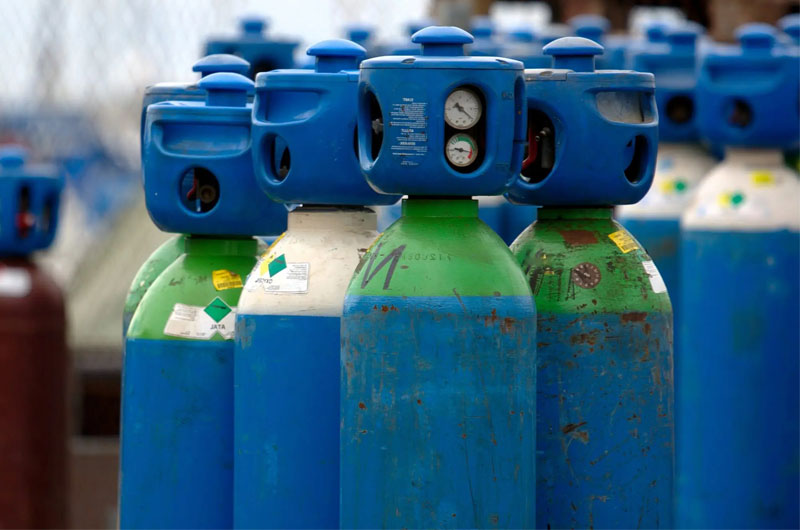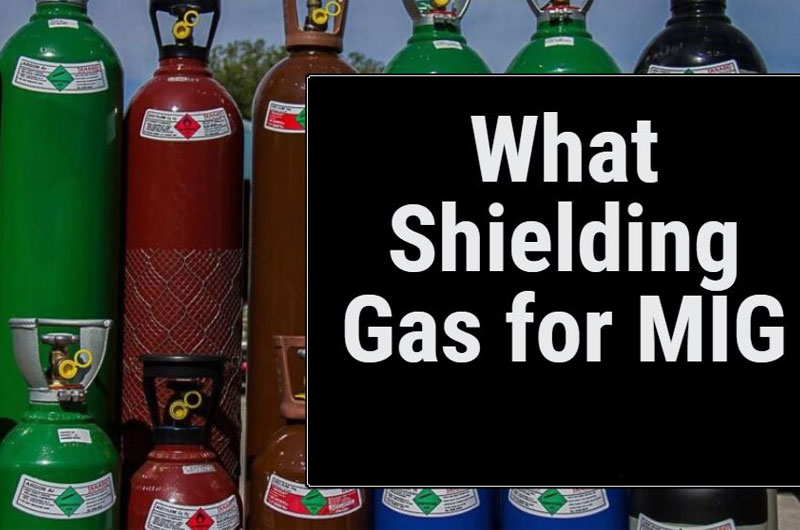The choice of shielding gas for MIG welding significantly affects arc stability, weld quality, penetration depth, spatter levels, and the final appearance of the weld.
Among the most common shielding gases used in MIG welding are Argon, Carbon Dioxide (CO₂), and various mixtures of the two.
1. Why Shielding Gas Matters in MIG Welding
Shielding gas serves three critical roles during MIG welding:
- Shields the weld pool from atmospheric gases such as oxygen, nitrogen, and water vapor, preventing porosity, oxidation, and other defects.
- Influences arc characteristics, affecting the arc stability, metal transfer mode, and weld bead shape.
- Impacts the penetration depth and heat input, which are crucial for strength and structural integrity.
Choosing the right gas can enhance productivity, reduce rework, and ensure high-quality results.
2. Pure Argon (Ar)

Argon is an inert gas, meaning it does not chemically react with the weld or base material. It is colorless, odorless, and non-flammable.
Advantages:
- Produces a smooth, stable arc.
- Minimal spatter, leading to cleaner welds.
- Excellent bead appearance.
- Suitable for spray transfer, especially on aluminum and stainless steel.
Limitations:
- Limited penetration when used alone, especially on steel.
- Not ideal for short-circuit transfer with carbon steel—may lead to poor fusion.
Best Uses:
- Welding non-ferrous metals like aluminum, magnesium, and copper alloys.
- Applications requiring high weld appearance quality.
3. Carbon Dioxide (CO₂)

CO₂ is an active gas and is the only commonly used reactive gas in MIG welding. It is more affordable than Argon and provides deeper penetration.
Advantages:
- Deep weld penetration, making it suitable for thick materials.
- Cost-effective.
- Strong fusion in short-circuit transfer mode.
Limitations:
- Higher spatter levels.
- Less stable arc compared to Argon or mixes.
- Rougher bead appearance.
- Increased post-weld cleanup.
Best Uses:
- Welding carbon and mild steel, especially in heavy fabrication or construction applications.
- Environments where cost is a critical factor.
4. Argon-CO₂ Mixtures

Argon and CO₂ are often blended to balance their individual characteristics. Common mixes include 75% Argon / 25% CO₂, 80/20, and even 90/10 depending on the application.
These blends offer a compromise between arc stability and penetration, making them the most widely used gases in MIG welding of steel.
Advantages:
- Stable arc and lower spatter than pure CO₂.
- Good weld bead profile and appearance.
- Versatile across different metal thicknesses.
- Suitable for both short-circuit and spray transfer.
Limitations:
- More expensive than pure CO₂.
- Not suitable for welding aluminum or exotic metals (still need pure Argon for those).
Common Mixes and Applications:
- 75% Argon / 25% CO₂: Standard for carbon steel; excellent for structural work, automotive, and general fabrication.
- 80% Argon / 20% CO₂: Slightly cleaner arc with reduced spatter.
- 90% Argon / 10% CO₂: Often used for spray transfer and higher deposition rates on thinner materials.
5. Specialty Mixes and Considerations
Argon-Oxygen Mixtures:
- Small additions of oxygen (1–5%) to Argon improve arc stability and puddle fluidity in spray transfer mode, especially for stainless steel.
Tri-Mix Gases:
- For welding stainless steel, mixes like Argon + Helium + CO₂ or Argon + Helium + O₂ are used for enhanced control, deeper penetration, and reduced oxidation.
Helium Additions:
- Argon-helium blends are useful for welding thick aluminum or copper, as helium improves heat input and penetration.
6. Choosing the Right Gas: Key Factors
When selecting a shielding gas for MIG welding, consider the following:
| Factor | Recommended Gas |
|---|---|
| Material Type | Argon for aluminum and stainless steel; CO₂ or Ar/CO₂ mix for carbon steel |
| Weld Thickness | CO₂ or higher CO₂ mixes for thick metals; Argon-rich for thin sections |
| Transfer Mode | Argon for spray; CO₂ for short-circuit; Mixes for both |
| Weld Appearance | Argon-rich blends for cleaner welds |
| Budget Constraints | Pure CO₂ for cost-efficiency |
| Post-Weld Cleanup | Argon-rich mixes minimize spatter and cleanup effort |

